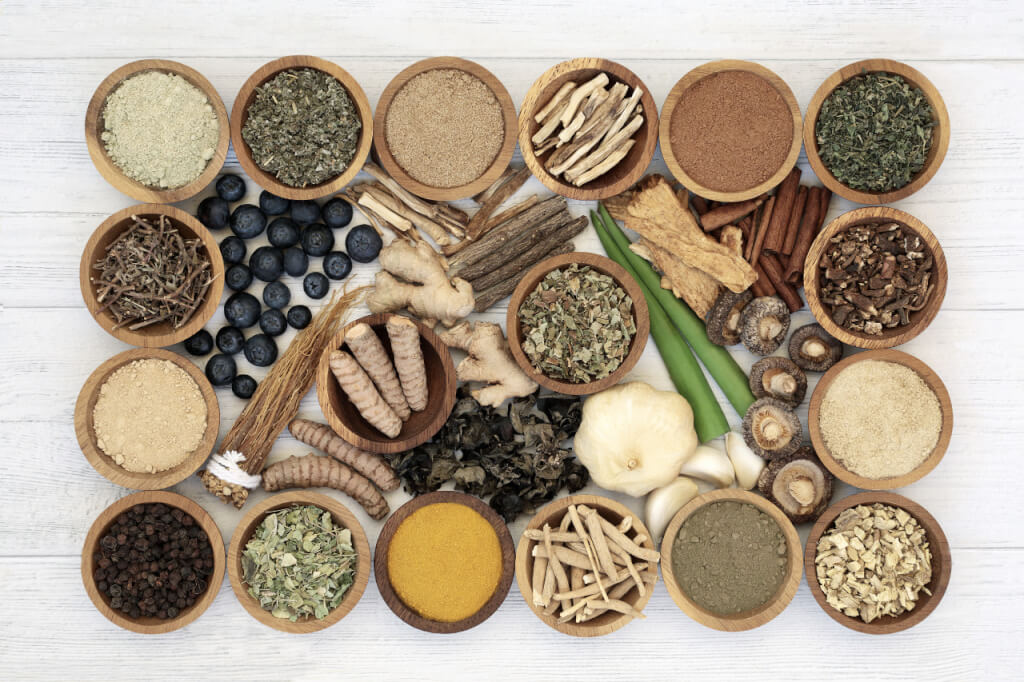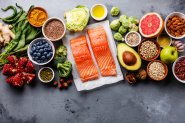Advertising Disclosure
Our team works hard to evaluate every product. If you click on links we provide, we may receive compensation.
6 powerful ‘superfoods’ that live up to the title
What are superfoods? First, “superfood” is not a technical term. Most nutritionists, doctors and dietitians refrain from using it. The term first appeared in the early 20th century as a part of a marketing ploy to get people to buy more bananas. The United Fruit Company used the word for bananas’ affordability, practicality and nutrition. Over 100 years later, we are still using the term superfood. Nut now, we use it to describe nutrient-rich foods with health benefits. So despite the word’s origins, what we now think of as “superfoods” are in fact healthy and nutritious. Let’s talk about the best superfoods that are worthy of the title.
DARK LEAFY GREENS
Dark leafy greens include kale, arugula, swiss chard, beet greens, bok choy, collard greens, broccoli rabe and turnip greens. Some people don’t like the taste of these vegetables on their own. But you can add them to your favorite soup, salad, smoothie or stir-fry. Dark leafy green vegetables contain folate, zinc, calcium, iron, and magnesium. Kale has very high levels of potassium. It also contains vitamins A, C and K. Meanwhile, Spinach is jam-packed with antioxidants like lutein and zeaxanthin. Studies show that eating these antioxidants decreases the risks of age-related eye diseases. Dark leafy green veggies can reduce your risk of type 2 diabetes, heart disease and various cancers.
BERRIES
Berries come packed with antioxidants, vitamins, and fiber. Blackberries, boysenberries and raspberries contain 8 grams of fiber per cup serving. That helps not only with your digestion but your glucose control and cholesterol too. Strawberries are an excellent source of folic acid, vitamin K, potassium and manganese. And eating about five strawberries a day can give you almost 100% of your needed vitamin C intake. Blueberries contain lots of phytonutrients, including anthocyanin. It’s what gives the berry its blueish-purple hue. And studies show that anthocyanin fights inflammation, viruses and cancer.
LEGUMES
The word legume refers to either a plant or the edible seed pods of a plant in the legume family. This category of food is broad and includes lentils, peas, peanuts and alfalfa. Beans also fall into the legume family, like soy, kidney, red, black, and garbanzo. All these legumes contain plant-based protein, B-vitamins, iron, zinc, calcium and magnesium. Legumes are also rich in fiber. That means they can aid your digestive system and make your feel fuller quicker so you won’t overeat. Beans can improve your cholesterol levels and reduce your risk of heart disease. If you add more peanuts to your diet, it can lower your risk of heart disease, stroke, cancer and diabetes.
GINGER
You may know ginger best as a flavorful spice, especially in Asian cuisine. But this is one of the most underrated superfoods. It is not uncommon to see ginger used to aid nausea and digestive problems. Many believe gingerol, the main antioxidant found in ginger is the key to its health benefits. Ginger contains anti-viral and anti-inflammatory components. These can help you fight colds, muscle pains, menstrual cramps and bacterial infections. It can also ease associated with gastroesophageal reflux disease, aka GERD. More recent studies have shown that ginger can help those with diabetes. In a 2006 study, gingerol improved insulin sensitivity and suppressed sorbitol levels in blood cells. So it appears that ginger can improve the quality of life for diabetics. And it may even reverse the effects of diabetes in the body.
GARLIC
Garlic shows up in lots of dishes because of it’s strong and delicious flavor. Many cultures also prize garlic for its medicinal properties to fight colds. It is a good source for vitamins C and B6, manganese, selenium, fiber, and allicin. When you chop or crush fresh garlic, you release the enzyme alliinase. This mixes with the amino acid alliin in garlic to form allicin. Researchers are still learning about this compound. But we know it fights atherosclerosis, diabetes, hypertension, high cholesterol and cancer.
MUSHROOMS
Cremini, shiitake, oyster, enoki, and portobello are a few edible mushroom varieties. Each mushroom type has plenty of nutritional and health benefits. Mushrooms contain no gluten or cholesterol. But they so contain vitamins, potassium, fiber and antioxidants. The antioxidants most present in mushrooms are ergothioneine and glutathione. These can help prevent cancer and heart disease. Researchers at the University of Malaya found that mushrooms improve brain health too. They may even contribute to cerebral nerve growth to reduce the risk of dementia and Alzheimer’s.
SUPERFOOD SUPPLEMENTS
Keep in mind that the real thing is always the better choice. But if the food is not available, supplements are still a great option. Some supplements have ingredients that could interact with other medications you take. so consult with your doctor before taking any supplements. Powder supplements are super easy to add to water, juice, or smoothies. Popular brands of superfood powders include Organifi Green Juice and Athletic Greens. These are full of antioxidants, vitamins, powdered coconut water, beetroot and wheatgrass. Want something simpler? We like Bob’s Red Mill’s Hemp Protein Powder, Matcha Love Matcha Powder and Goji berry powder. But remember that these are only supplements. They do not replace eating a healthy diet rich in the best superfoods.






